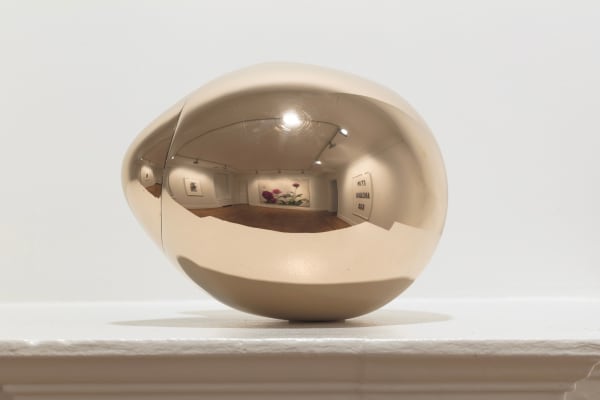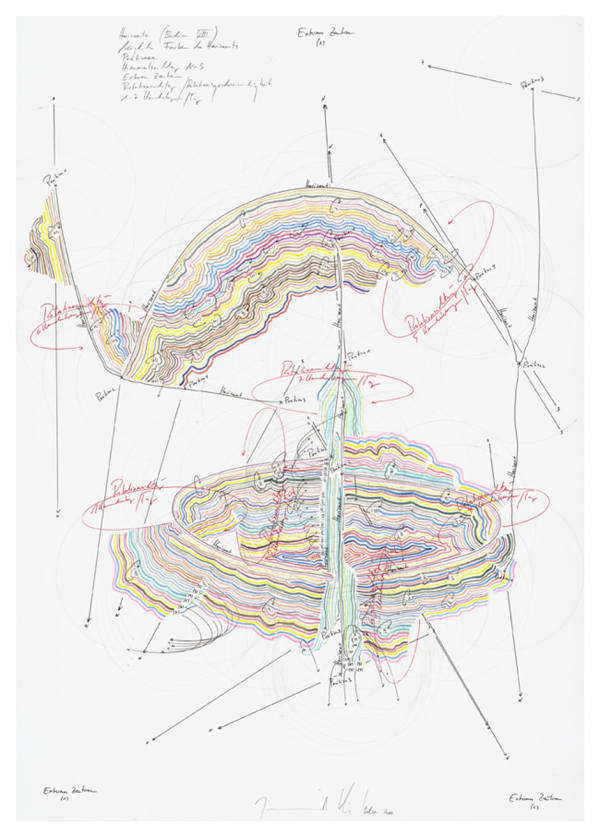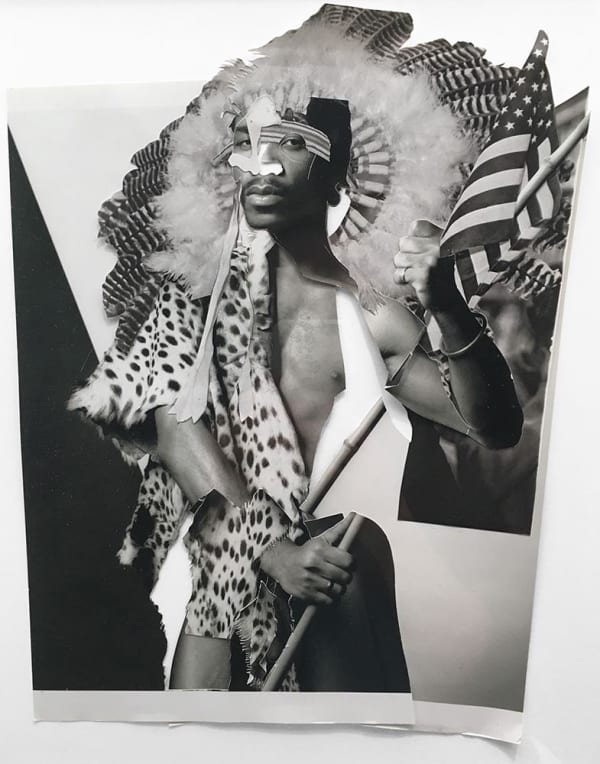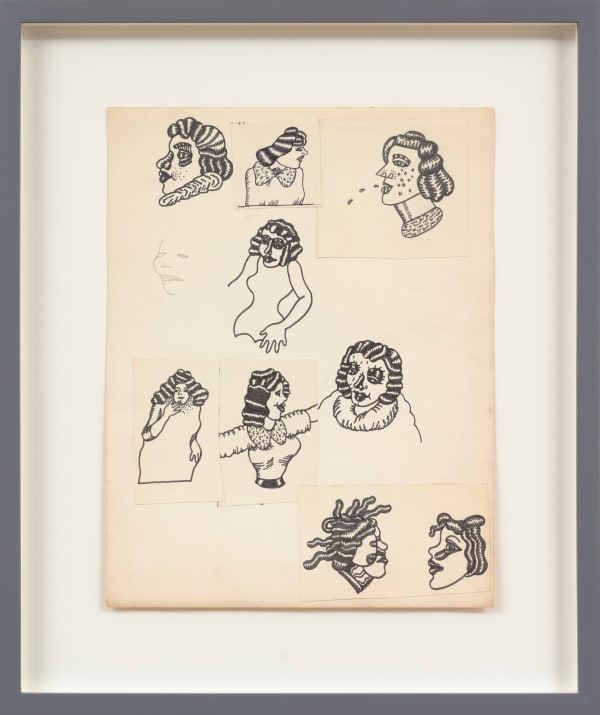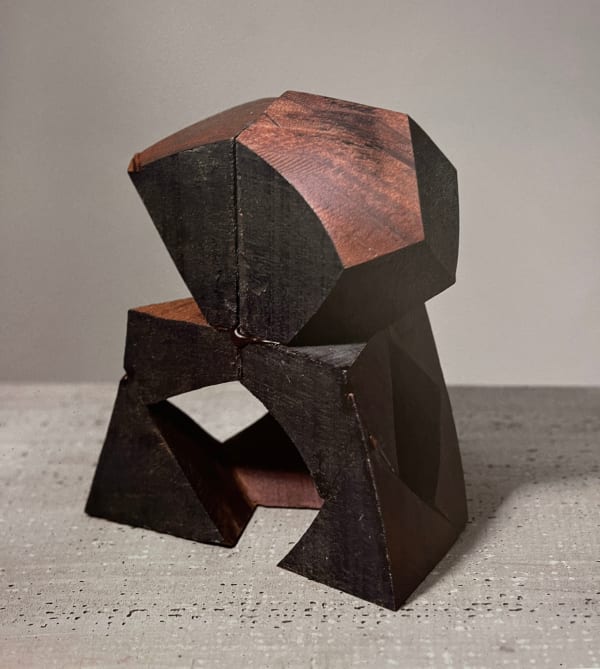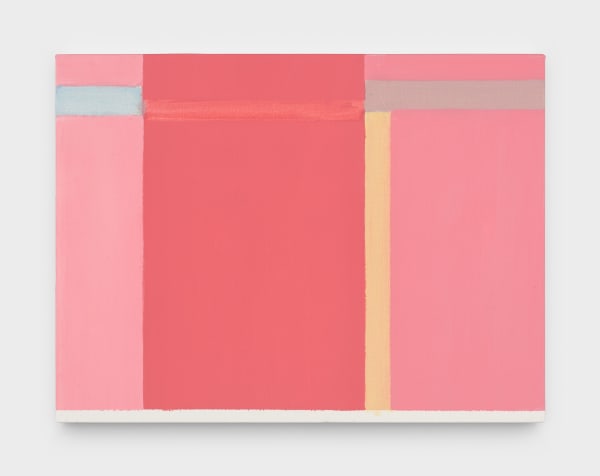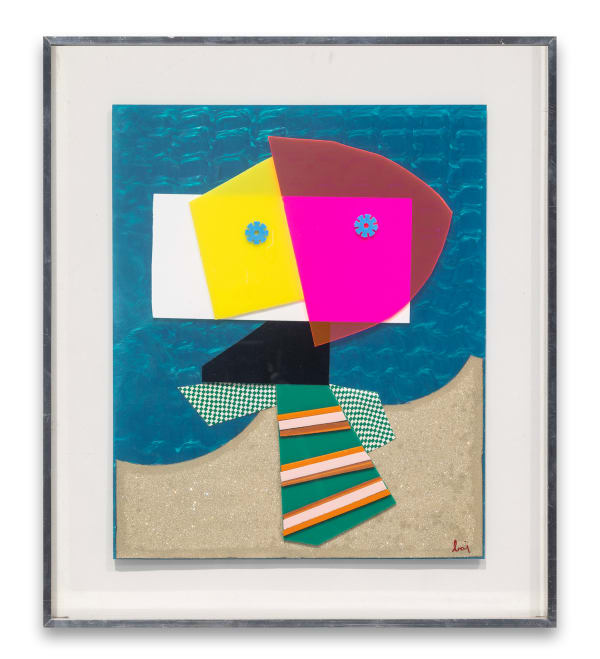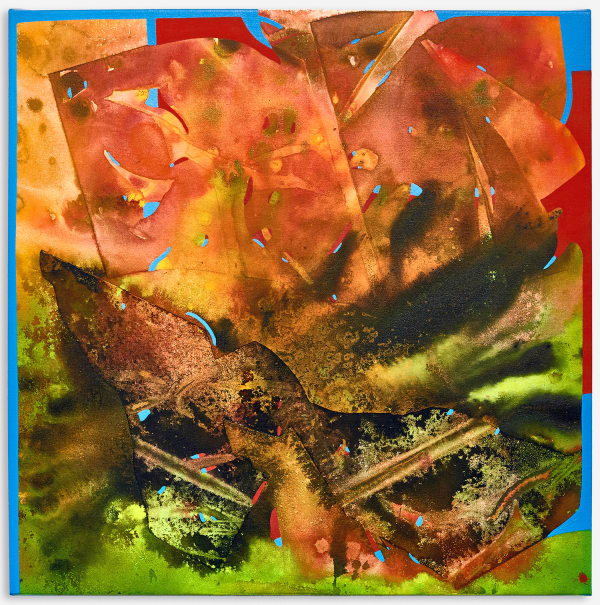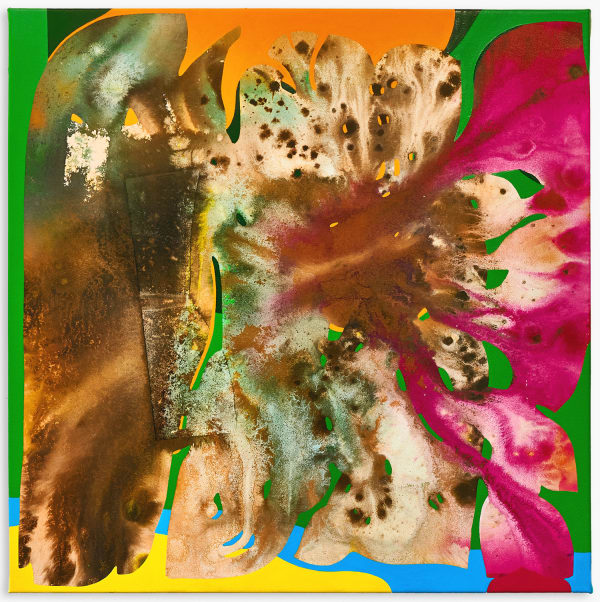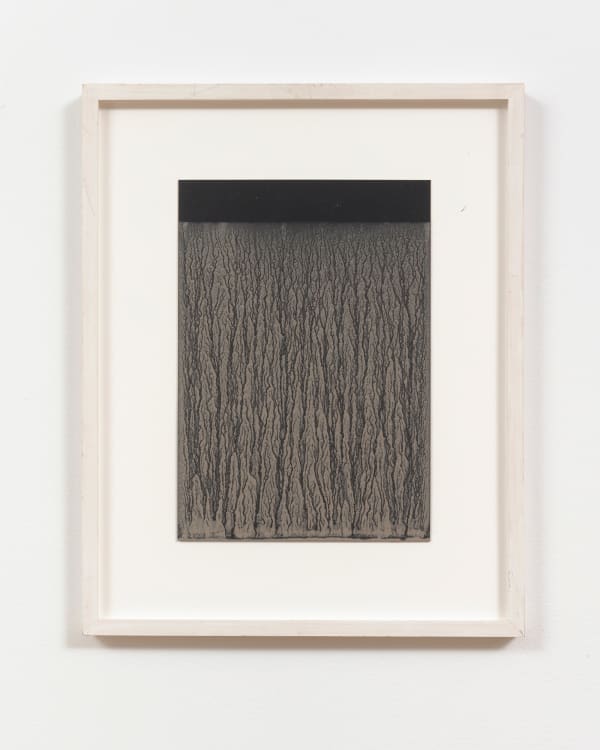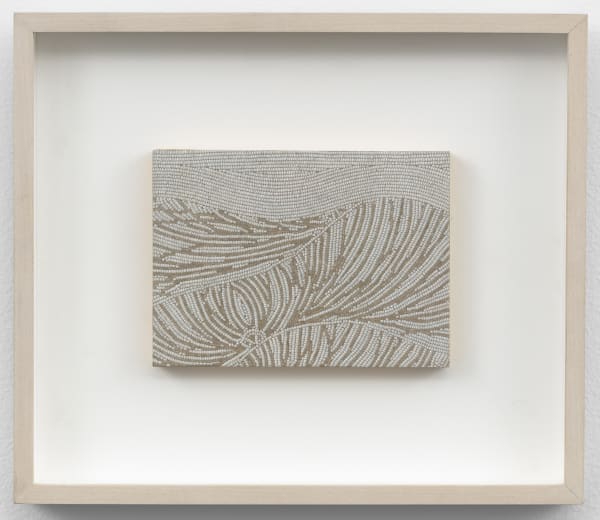THE DALLAS INVITATIONAL
2821 Turtle Creek Boulevard
Dallas, TX
For this year's edition of The Dallas Invitational, David Nolan Gallery is thrilled to present a selection of works by artists from its program and exhibition history.
-
PRESS
-
David Hartt (b. 1967) creates sensitive and concise portraits of contemporary societies, exploring how historic ideas and ideals persist or transform over time. His art is based on extensive historical research, connecting the past to the present through themes of race, culture, identity, and migration. For him, "place" is a way to investigate ideology and the intersection of private and public life. Hartt is currently included in group shows at the Art Institute of Chicago and the Musée d'art contemporain de Montréal and has had solo exhibitions at The Hammer Museum, CA; the Art Institute of Chicago; and the Cincinnati Art Museum, OH; among others.
Chakaia Booker (b. 1953) is known for her distinctive use of black rubber tire since the 1980s. Booker also works extensively with paper, maintaining a collage and printmaking practice. As an abstractionist, the essential elements of materiality, modularity, and movement are the key building blocks for all of Booker's works regardless of media. The ability to build textures and movement through repetition draws parallels to industrialization and cultural homogenization, hallmarks of the American dream. Chakaia Booker will have a solo exhibition at the National Gallery of Art, Washington, D.C. from April 5 - August 3, 2025.
-
Rodolfo Abularach (1933-2020) is one of Latin America's most distinguished masters, best known for his dramatic close-up renditions of human eyes, an image that gripped him for two decades. In the 1980s, Abularach shifted his focus to volcanoes, seeing it as a center of energy. Growing up in Guatemala City, a valley surrounded by volcanoes, the symbol further served as a connection to home and ancient history. Abularach's work is held in several prominent public collections, including the Museum of Modern Art, NY; Metropolitan Museum of Art, NY; Museum of Modern Art, Guatemala City; and Museum of Contemporary Art, São Paulo; among others.
Jorinde Voigt (b. 1977) observes and explores the inner processes of perception in relation to various external phenomena such as imagination, emotions, music, memory, sensory experience, and scientific data. She creates complex systems of charts, diagrams, and thought models to depict the intersection of subjective experience with seemingly objective external stimuli. Voigt has been the subject of solo exhibitions across North America and Europe, including at the Menil Collection, TX; Royal Ontario Museum, Toronto, and Hamburger Bahnhof – Museum für Gegenwart, Berlin, among others.
-
-
 Young-Jae LeeUntitled, 2005ceramic spindle vase
Young-Jae LeeUntitled, 2005ceramic spindle vase
stoneware, feldspar glaze, fired at 1280°Ch: 10 1/4 in (26 cm)
Ø: 12 1/4 in (31 cm) -
 Sherrie LevineTears of Agnes, 1998pencil and gouache on paper15 x 11 in (38.1 x 27.9 cm)
Sherrie LevineTears of Agnes, 1998pencil and gouache on paper15 x 11 in (38.1 x 27.9 cm)
framed: 21 x 17 in (53.3 x 43.2 cm) -
 Rodolfo AbularachCenter Imageoil on canvas30 x 30 in (76.2 x 76.2 cm)
Rodolfo AbularachCenter Imageoil on canvas30 x 30 in (76.2 x 76.2 cm)
-
-
The vessels of Young-Jae Lee (b. 1951) speak to both identity and uniqueness, while also addressing the significance of repetition and variation. Initially, her forms were pure, light in color, but over time, she introduced subtle changes by incorporating minerals like copper to achieve different hues, from light pinks to darker reds. The interaction of movement, light, and shadow on her pots suggests her ongoing search for new forms and colors. Lee has been the Director of the Keramische Werkstatt Margaretenhöhe in Essen, a ceramic workship founded in 1924 as part of the Bauhaus Ceramic School in Weimar.
Sherrie Levine (b. 1947) is best known for popularizing the appropriation of imagery to investigate the meaning of authenticity and the art historical canon. Part of the Pictures Generation, a New York-based group of artists examining the codes of mass imagery, Levine's wide-ranging body of work also looks to the influences of non-Western cultures to produce her unique commentary on the very meaning of the image. In 2011, Levine's work was the subject of a major survey, SHERRIE LEVINE: MAYHEM, at the Whitney Museum of American Art.
-
Building upon a conceptual foundation in photography, Wardell Milan’s (b. 1977) practice encompasses drawing, collage, and painting to explore ideas of the body, beauty, and the unconscious. His multi-media works often reference and incorporate the imagery of artists such as Diane Arbus and Robert Mapplethorpe; through cut-paper and collage techniques, he constructs striking human subjects with reclaimed photographic elements, contending with the medium’s visual lineage and its claims to representation. In 2021, the Bronx Museum held a major solo museum exhibition of Milan's work entitled Wardell Milan: Amerika. God Bless You If It's Good To You.
Ray Yoshida (1930-2009) is known for his hard-edged forms and figures heavily influenced by the imagery of popular culture and comic books. Yoshida possessed a large collection of vernacular imagery and art, to which he had a profound relationship. Yoshida taught a generation of artists at the School of the Art Institute of Chicago and encouraged them not to ignore their own everyday lives and objects in their art but rather to look to it as a source of creativity. Yoshida continues to be celebrated for his innovative work and influence upon a generation of artists, with solo exhibitions across the United States and his work held in the permanent collections of The Art Institute of Chicago; The Smithsonian American Art Museum; the Museum of Modern Art, NY; and more.
-
Erwin Pfrang (b. 1951) pulls back the curtain on humanity to expose scenes with harsh honesty. There are no taboos in his world populated by autobiographical situations, memories, and desires, where humans without masks lead tortured existences. His compositions evoke a modern-day Bruegel with a deeply psychological angle, often depicting multiple perspectives within a single sheet of paper. Pfrang's work is included in many public collections such as the Museum of Modern Art, NY; Morgan Library and Museum, NY; Yale University Art Gallery, CT; and the Saint Louis Art Museum, MO; among others.
-
Over the course of five decades, Mel Kendrick (b. 1949) has established himself as a preeminent American sculptor, pushing the boundaries of the medium through a rigorous and sustained commitment to discerning a work through the process of making it. He addresses philosophical, conceptual, and fundamental questions around sculpture: namely, the relationship between the object as we experience it and the clearly evident means by which it was created. Kendrick was recently the subject of a major retrospective, Mel Kendrick: Seeing Things in Things, at the Parrish Art Museum, NY and the Addison Gallery of American Art, MA.
Barry Le Va (1941-2021) is often categorized as a Scatter or Process artist, yet his background in mathematics and architecture provided a strong foundation for his more structured tendencies. Le Va's drawings were central to his oeuvre in relation to his sculptures, serving as flexible blueprints or what he called "plan views" for his sculptures. He strongly resisted the notion of a "finished" or "unfinished" piece, preferring instead to embrace the evolving nature of his work. A retrospective of Barry Le Va's work, Barry Le Va: In a State of Flux, is currently on view at Museum Kurhaus Kleve in Germany. The exhibition initiated at the Kunstmuseum Liechtenstein in Vaduz and traveled to Fruitmarket Gallery in Edinburgh before moving to Kleve.
-
Paulo Pasta (b. 1959) is one of the most revered and consistently engaging contemporary painters of his native Brazil. Pasta demonstrates his mastery of form and color within the two-dimensional plane through his highly architectural compositions. Pasta constructs his elegant geometries of posts and beams with the purpose of heightening the subtle chromatic variations among them. His works slowly reveal themselves through soft tonal gradations and their gentle, constant rhythm. Pasta has exhibited extensively across North America, South America, and Europe, including solo exhibitions at the Pinacoteca de São Paulo; Palazzo Pamphilj –Embassy of Brazil in Rome, Italy; and Museu Afro Brasil; among others.
The work of Enrico Baj (1924-2003) encompasses Dada and Surrealism and masterfully subverts mainstream artistic conventions. The work is seriously political but also absurd, with a passion for the eccentric and a strong iconoclastic impulse. Baj was one of the central figures of the Italian Neo-Avant-Garde. A suite of exhibitions, culminating at the Palazzo Reale Milano, celebrated the artist's 2024 centennial.
-
Vian Sora's (b. 1976) intensely autobiographical paintings are imbued with emotional complexity and tension. One of the strong new energetic voices of her generation, Sora wrests control from the swirl of pigments, creating semi-figural forms and balance from each composition. Her painting process reflects a search for harmony and transcendence, employing abstraction to create "emotional landscapes" that give the time-honored movement new life and purpose. Vian Sora is the subject of an upcoming solo museum show, which will travel from the Santa Barbara Museum of Art, CA (June 22-September 7, 2025), to the Speed Museum, KY (October 10, 2025-January 18, 2026), and finally to the Asia Society Texas (April 2-July 5, 2026).
-
-
 Richard LongUntitled, 2006River Avon mud on cardboard11 x 7 3/4 in (28.1 x 19.6 cm)
Richard LongUntitled, 2006River Avon mud on cardboard11 x 7 3/4 in (28.1 x 19.6 cm)
framed: 17 x 14 in (43.2 x 35.6 cm) -
 Victoria GitmanUntitled, 2006oil on board4 3/8 x 6 in (11.1 x 15.2 cm)
Victoria GitmanUntitled, 2006oil on board4 3/8 x 6 in (11.1 x 15.2 cm)
10 x 11 1/2 x 1 3/4 in (25.4 x 29.2 x 4.45 cm) -
 Rodolfo AbularachVentana con Esfera (Window with Sphere), 1966-67ink on paper40 x 30 in (101.6 x 76.2 cm)
Rodolfo AbularachVentana con Esfera (Window with Sphere), 1966-67ink on paper40 x 30 in (101.6 x 76.2 cm)
-
-
Richard Long (b. 1945) is one of the most well-known Land Artists. Long utilizes natural materials like water and mud to trace his physical movement through space. In his words, "I like the idea that art can be made anywhere," highlighting his idea that traditional media could work in tandem with performance and conceptual art. Long is the only artist to have been shortlisted for the Turner Prize four times and his work is in prominent collections across the world, including the Tate and the Museum of Modern Art, NY.
Victoria Gitman (b. 1972) creates incredibly tactile paintings focused on material objects and their textures. Gitman paints from observation, frequently representing feminized objects such as purses and vintage garments and in so doing she calls attention to the gendered elements of painting and of art history. Gitman's unadorned, sincere compositions unfurl slowly, forging an intimate connection with the viewer. Gitman is featured in many museum collections, including the Los Angeles County Museum of Art, CA; the Whitney Museum of American Art, NY; and the Pérez Art Museum Miami, FL; among others.
-
-
 Richard ArtschwagerSix Objects, 1975ink and graphite on paper7 7/8 x 11 5/8 in (20 x 29.5 cm) or 11 5/8 x 7 7/8 in (29.5 x 20 cm)
Richard ArtschwagerSix Objects, 1975ink and graphite on paper7 7/8 x 11 5/8 in (20 x 29.5 cm) or 11 5/8 x 7 7/8 in (29.5 x 20 cm)
framed: 10 3/8 x 13 3/4 in (26.2 x 34.9 cm) or 13 3/4 x 10 3/8 in (34.9 x 26.2 cm) -
 Rodolfo AbularachOjo en la Ventana (Eye in the Window), 1973oil on canvas30 x 24 in (76.2 x 61 cm)
Rodolfo AbularachOjo en la Ventana (Eye in the Window), 1973oil on canvas30 x 24 in (76.2 x 61 cm) -
 Rodolfo AbularachOjo Centro Blanco No. 6 (White Center Eye No. 6), 1970ink on paper30 x 30 in (76.2 x 76.2 cm)
Rodolfo AbularachOjo Centro Blanco No. 6 (White Center Eye No. 6), 1970ink on paper30 x 30 in (76.2 x 76.2 cm)
framed: 33 1/4 x 33 1/4 in (84.5 x 84.5 cm)
-
-
Richard Artschwager (1923-2013) forged a unique path in art from the early 1950s through the early 21st century, making the visual comprehension of space and the everyday objects that occupy it strangely unfamiliar. In fact, the more mundane the object, it seems, the more appealing it was as fodder for Artschwager's fertile imagination, and none were more banal than the six - Door, Window, Table, Basket, Mirror, Rug - that ignited a multi-decade obsession beginning in the 1970s. He generated hundreds of permutations of these domestic objects, proving his devotion to the art of looking long enough to see the world as it is. Numerous institutions have presented solo exhibitions on Artschwager's work, including the Whitney Museum of American Art, NY; Guggenheim Museum, Bilbao, Spain; the Museum of Fine Arts, Boston; and more.

